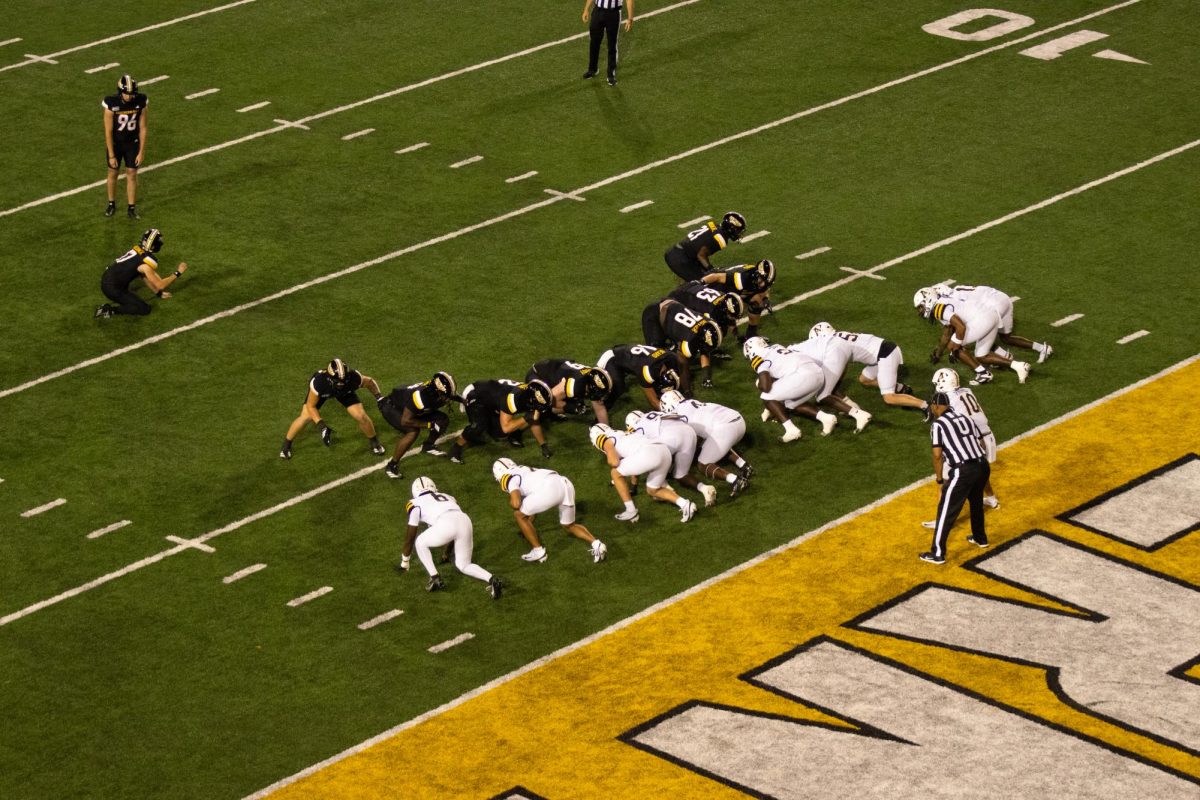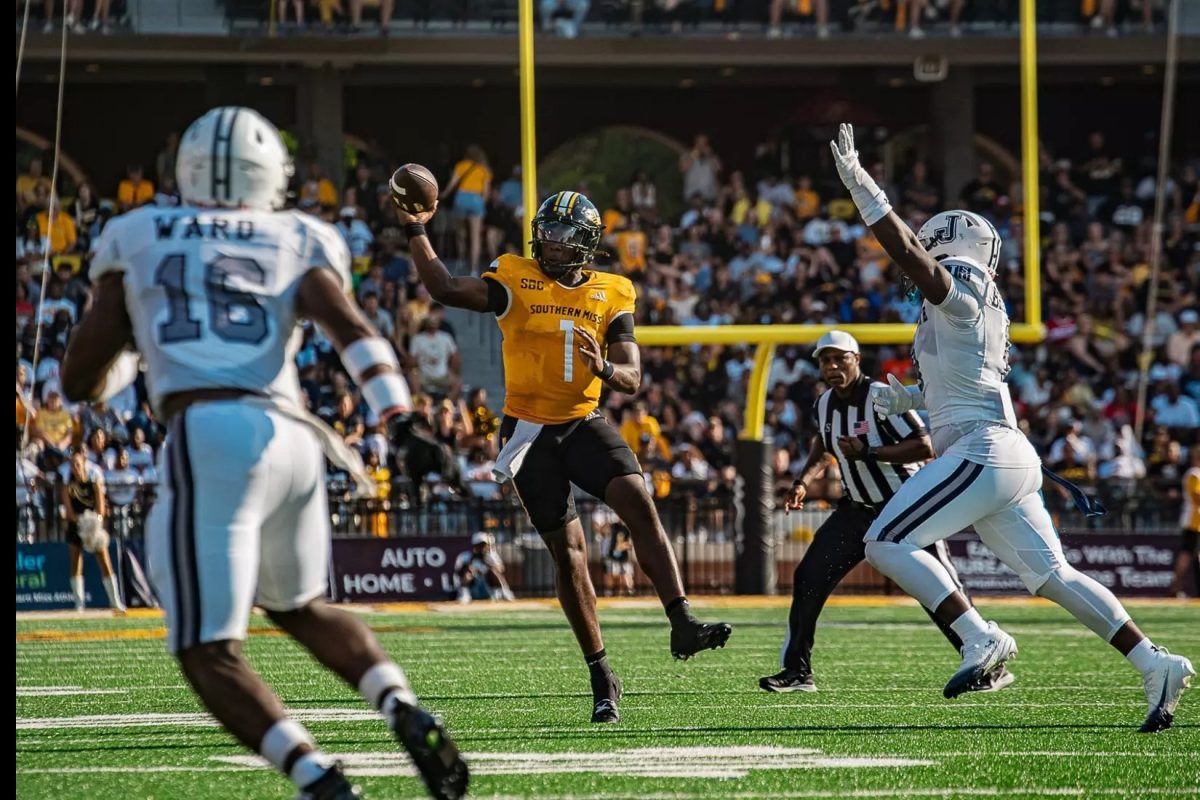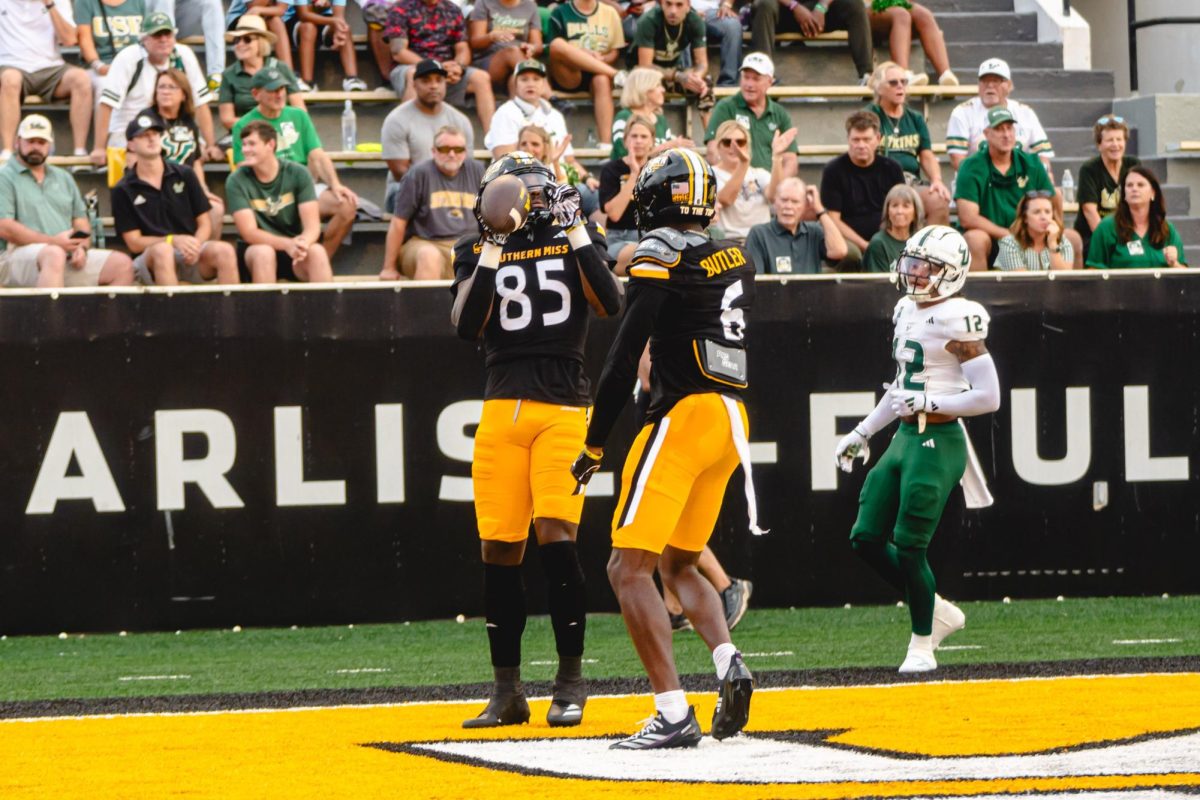The American Football Coaches Association (AFCA) recognized The University of Southern Mississippi football program for its academic achievement in having a graduation rate of 75 percent or better in the Division I Football Bowl Subdivision.
The Touchdown Club of Memphis will present the AFCA’s 2013 Academic Achievement Award in January 2014. The University of Georgia, Rice University, Stanford University and Tulane University will share the 2013 award, graduating 100 percent of its freshmen football student-athlete class of 2006.
Southern Miss as well as 46 other institutions will be recognized for graduating 75 percent or more of their football student-athletes. Twelve of those institutions include West Point Military Academy, Boston College, Duke Universtiy, East Carolina University, Louisiana Tech, University of Nebraska, Northwestern University, University of South Florida, Texas Christian University, University of California Los Angeles, Virginia Tech and Washington State University. These universities achieved a rate of 90 percent or better.
The College Football Association (CFA) established the Academic Achievement Award in 1981. The award recognized the CFA-member Football Bowl Subdivision institution with the highest graduation rate among members of its football team. When the CFA separated in 1997, the AFCA started presenting the award and conducted a graduation rate survey that involved all members of the FBS.
This year’s award marked the sixth time the NCAA’s Graduation Success Rate (GSR) formula was used to select the winner. From 1981 to 2007, the award was presented based on a formula used by the College Football Association and AFCA. Since 2008, the criteria for the Academic Achievement Award include having the highest NCAA GSR, at least 15 students in the GSR Cohort, and a Federal Graduation Rate of 75 percent or better.
The GSR is concentrated around a six-year span of graduating student-athletes, which is a change from the five-year window used by the CFA and AFCA. The NCAA developed the initiative to evaluate the academic success of student-athletes. In addition, the GSR holds institutions accountable for transfer students and midyear enrollees unlike the federal graduation rate.
Under GSR calculations, institutions are not penalized for outgoing transfer students who leave in good standing academically. The outgoing transfers are distributed to the receiving institution’s GSR cohort. By counting incoming transfer students and midyear enrollees, the GSR of student athletes increase by more than 37 percent.





























